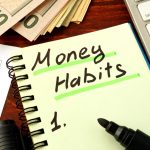Buying a used car is a fantastic way to save a sizable chunk of money while still getting the high-quality vehicle you want and need if you know what you are doing. Buying a new car is simple of course, you just head to the dealership and pick what you like, but this is also the most expensive option, and the second you drive away from the dealership, your car begins to rapidly depreciate, losing a big portion of its value in the first few years you own it. When you buy a used car, the right used car, you let the first owner take the pain of that steep loss of value while you reap the savings as you buy the vehicle for a way lower price than the original owner did. However, finding the right used car is certainly a lot more tricky than just going to a dealership, so here are some tips to get you started.
Affordable Budget
Start by setting a budget you can afford, and it is important that you not only factor in the cost of buying the car itself but also look a little beyond that because the costs all add up quickly. Cost of interest on your car loan, or how much you will need to pay to insure your new ride, maintenance, and parking costs, there are numerous expenses here and there that add up over time, and you should factor them in before you start scouring the markets. Find a balance between the cost to buy and the cost to actually own. When you purchase an older car, you obviously can expect a lower price, but that comes with the caveat that the older the car, the more likely and frequently it will need quite expensive repairs. Luckily, nowadays everyone has the luxury of having a wealth of information available right at their fingertips, so you can educate yourself on repair costs, frequent issues, and reliability.
Find the Right Car
Again, shopping for the right used car is more challenging than finding and purchasing a brand new car, as when you want the used one, not only do you need to find the right model, but you have to find one that is on sale, has low enough usage to be attractive, is in good condition, preferably has not been crashed, and has been serviced as needed. Before you get serious about any car, you need to know what to inspect in a used vehicle, and you also need to evaluate the seller as well. You likely will not be buying from a dealership or company but from a private seller instead, who may not be the most honest or earnest seller there is. In short, there is a whole lot more research involved when you are pursuing a used car.
Where to Get It
When it comes to the seller, you have a variety of options from which you can purchase a used car, each having its strengths and weaknesses in terms of service, price, and ease. Like the vehicle you want to purchase, you should try to learn as much as you can about the dealership or private seller you are considering buying from. Checking the company out with a consumer protection agency or your local Better Business Bureau is a great method of finding out about their track record. You do not just want to look at the number of complaints, as everyone has problems but rather how they responded to correct the problems, what their reaction was like, and how good their customer support is.
Test Drive
This is true for whether you are in the market for a new or used car, always take it for a test drive first before you decide anything, as this is just the best and most practical way of finding out whether the car fits you. How it handles, how you feel driving it, whether it steers slowly and heavily or whether you only need to nudge it in the right direction to get a response, how the interior looks to you, what the seats feel like, whether you are comfortable in the car—these are all questions you can answer with a test drive. Check the braking, keep an ear out for sounds of grinding, squeaking, or metal-on-metal, and listen closely to the engine. A smooth hum is a good sign, while knocking or sputtering may be cause for concern.
Buying a used car is worth it in the end if you know what to look out for and are willing to go through the more challenging process of filtering through all the bad apples. Once you have an idea of what to expect, you are already prepared to get started.














